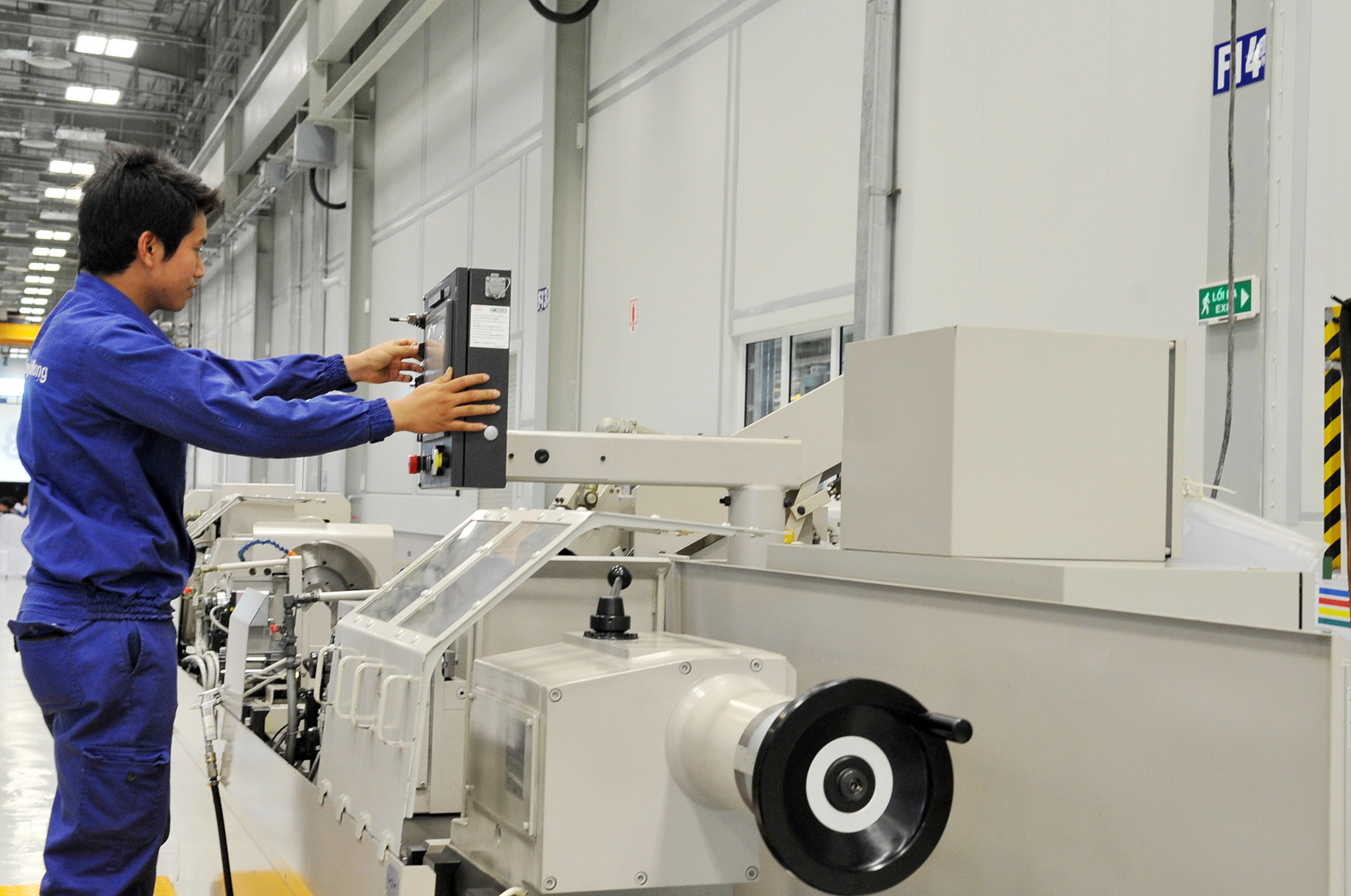
The manufacturing and processing industry has contributed to the industrialization and economic development of many nations. The success of the UK, France, US, Germany, Japan and South Korea shows that this industry is the key to create wealth.
Vietnam has the desire to become independent, self-reliant and prosperous, and needs to develop a strong processing and manufacturing industry. The 13th Party Congress has set the goal of having this industry make up over 25 percent of GDP. However, development is very challenging at this time.
According to the Ministry of Industry and Trade, the proportion of the processing and manufacturing industry in Vietnam’s GDP increased from 13.4 percent in 2016 to 16.58 percent in 2020, but the growth rate was still lower than the standards set by developed countries.
In China, the industry has made up 25-27 percent of GDP over the last decades. The figures are 25 percent in South Korea and 20 percent in Japan. Compared with other Southeast Asian countries, Vietnam lags behind Thailand (25.3 percent) and Malaysia (21.5 percent).
They also pointed out that there are still many problems in Vietnam’s processing and manufacturing industry: Vietnam mostly does outsourcing and simple assembling; its supporting industries have been developing slowly; and many indicators of the processing and manufacturing industry are still low.
There are about 122,000 processing and manufacturing enterprises which account for 15.4 percent of total enterprises. However, most of them are foreign-invested enterprises (FIEs) which make up 63 percent of pure revenue and 61.3 percent of labor.
In some business fields, such as electronics, automobile, motorbike, leather and leather products, FIEs dominate. Even in some business fields in which Vietnam has an advantage, such as textiles and garments, FIEs account for 56 percent.
Big challenges
For most FIEs, they make investment in labor intensive industries which bring low added values. Many investors acknowledged that the low labor and energy costs, as well as attractive investment incentives are the main reasons for them to decide to invest in Vietnam. Very few FIEs said that high labor force quality and competitive domestic supply chains are the competitive edges of Vietnam.
The Vietnamese private enterprises in the processing and manufacturing industry not only account for a very small proportion of total enterprises, but they also cannot master core technologies, which explain why they can only undertake the production stages with low technology content and added value
According to the 2021 economic census, in 2016-2020, the businesses set up in Vietnam were mostly small and tiny ones. On average, one private enterprise could only attract 13 workers and had the investment capital of VND43.8 billion. Most of capital concentrated in 3 percent of enterprises, which were large private businesses, while small and medium enterprises only had VND10-12 billion.
About 97 percent of operational businesses are small and medium and most of which are private run. Of small and medium enterprises, 50 percent have the revenue of less than VND3 billion a year, about 13 percent have the revenue of between VND3 billion and VND10 billion, while the number of enterprises creating VND300 billion a year in revenue just accounts for less than one percent.
Using few workers, having small capital and low revenue, most private enterprises find it difficult to attract skillful workers, to attract financial resources and they lack capital to invest in technology, equipment and machines. This explains why most private enterprises operate in the fields of trade and services.
Even large private enterprises in the processing and manufacturing industry are also not excellent. VPE 500, the report about Vietnam’s 500 largest private businesses released by the National Center for Socio-Economic Information and Forecast, shows that of 500 largest businesses in 18 business fields, 266 enterprises operate in the field of processing and manufacturing, which account for 53.2 percent, a relatively high figure.
However, most of the 266 enterprises operate in the capital intensive fields, such as building materials and other non-metal minerals (28), the products made of rubber and plastics (18), metal production (30). The other enterprises operate in labor intensive fields such as textile and garment (23), food and beverage processing (90), mostly processing seafood products for export.
Thus, the processing and manufacturing enterprises in VPE 500 mostly focus on exploiting the business fields with advantages in materials and markets.
Notably, the ranking of processing and manufacturing enterprises in the list was not high compared to other industries. Only about 21 processing and manufacturing enterprises were listed in Top 50, while 156 enterprises ranked from 300th onwards. In the Top 10, there were only 3 enterprises, while the trade industry had 4 enterprises.
Therefore, increasing the processing and manufacturing proportions in GDP to over 25 percent in 2021-2025 proves to be a very difficult tasks.
Tran Thuy